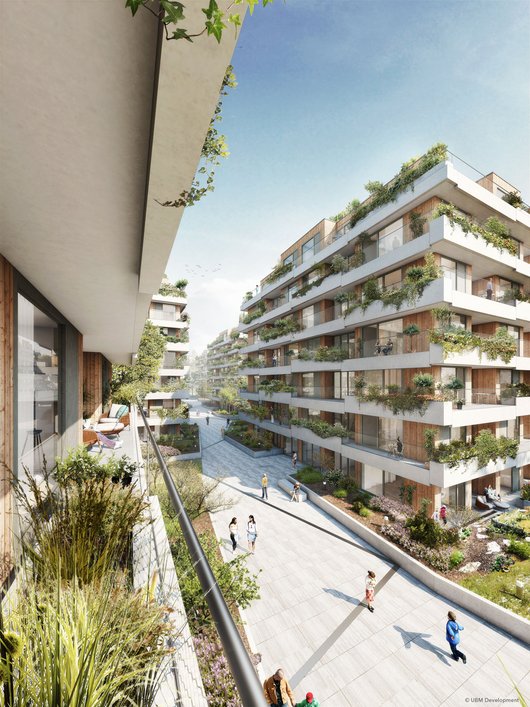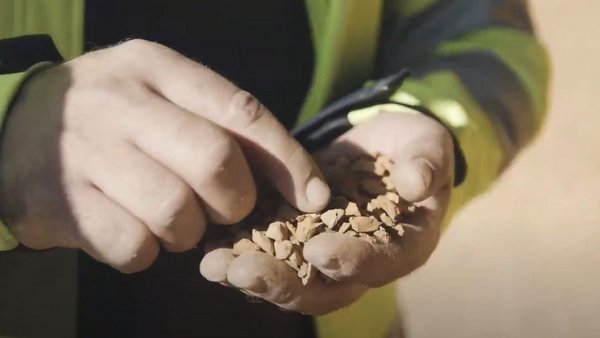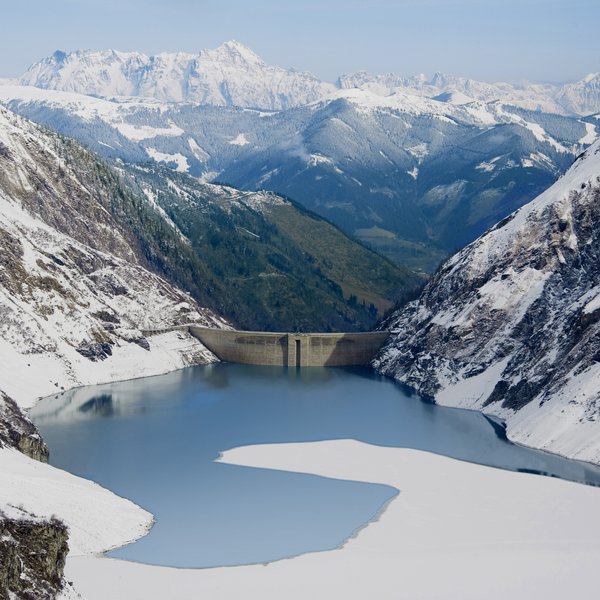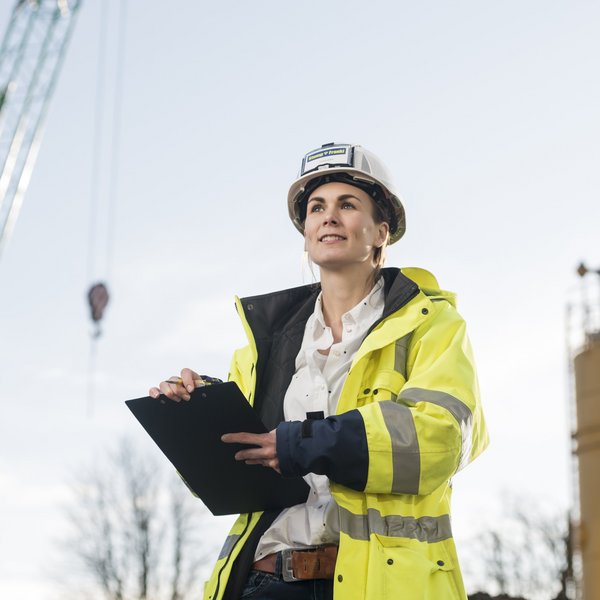![[Translate to Englisch:] Linus Lintner Fotografie Am Mauerpark, ein Objekt der Porr Deutschland GmbH](/fileadmin/_processed_/8/1/csm_20180614_Zalando__1__35ef3e9bd7.jpg)
The green city
The summer sun beats down upon the city with a harsh light. The air above the hot asphalt shimmers. The heat builds up in narrow alleyways. And it doesn’t dissipate with the day’s last ray of sunshine. Because night-time is when the buildings slowly release their stored heat. Like radiators. But, little by little, they are being switched off. We are applying innovative and sustainable concepts to building, cooling and expanding urban spaces – all at the same time.
Bright
All roofs should be painted white. This proposal by Steven Chu, Nobel Prize winner and former US energy minister, caused a sensation. Light surfaces reflect energy from the sun while dark ones absorb it, which in turn contributes to global warming. For years, the scientist was mocked. Today countless researchers are working on surfaces that retract almost all of the sunlight and can even eliminate the need for air-conditioning systems.
Horizontal
An even more sustainable solution is greening roofs. Gardens or even entire parks now exist on many urban buildings. And recycling plays a huge part here. At the Himberg recycling center, for example, construction waste is turned into brick chippings that can retain water and nutrients. And this is then used for greening roofs. In addition to enhancing the optics of the building, this naturally brings an array of other benefits. Green roofs offer protection against the heat and the cold, optimise the climate, bind particulate matter, increase oxygen production and lead to a temperature reduction in cities. What’s more, they extend the lifetime of the roofing and decrease its thermal stress.
Vertical
While the Hanging Gardens of Babylon were one of the seven wonders of the ancient world, there are now more and more companies like IAT who are planting on more and more roofs and facades. Evergreen climbers on facades provide insulation in winter and protection from the summer heat, as well as from heavy rain and UV rays. The important thing is that the plants are adapted to the environmental conditions. A distinction is made between ground-based plants or those planted on the facade itself. The plants are either grown in beds at the base and climb up. Or they are placed in containers hanging on the facade system itself. The plants then grow horizontally, as if coming out of the wall. The advantage? The facade is immediately transformed into a continuous carpet of vegetation.
Global
Green buildings are springing up all over the world. In Amsterdam for example. The Valley project by MVRDV brings nature to the city. The three towers are open to the public up to the fifth floor. Entrances to the shops and offices are enclosed in natural stone. Huge skylights let in the light while simultaneously serving as ponds. The glass facade blends in perfectly with the surroundings of the business quarter, while the offices are fitted with floor-to-ceiling windows. An automatic irrigation system takes care of the trees and plants. And – at a height approaching 100 metres – there’s also a skybar.
In Denmark’s Billund, the impressive Lego campus also offers lots of green space on a total area of 52,000 square metres. The plants and roofs absorb water and CO2. Rainwater is used for irrigation. The developer has installed 4,150 solar panels on the roof of the nearby parking garage. They meet half the power demand of the campus. Those who work here profit from ample freedom of movement and space for creativity as well as a pleasant and – above all – sustainable work environment.
In Jiangbei, China, there are two forests growing up simultaneously – 1,100 trees up to nine metres tall on two skyscrapers. And the balconies are bedecked with an addition 2,500 climbing plants and lichens. The flora should absorb up to 25 tonnes of CO2 a year.
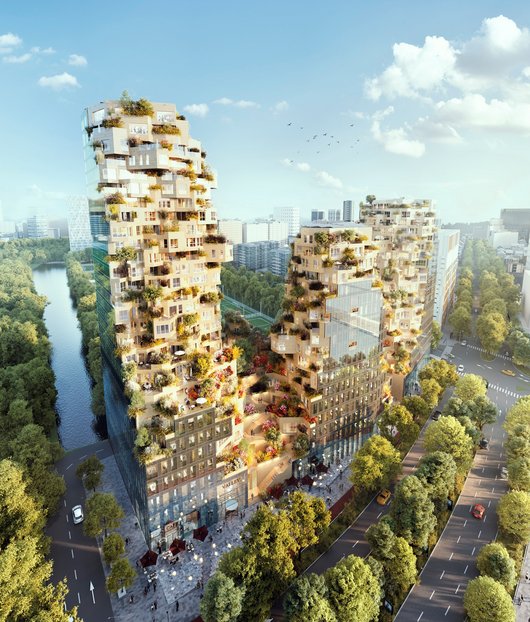

Berlin is going greener as well. Immergrün, to be more precise. That’s the name of a residential complex realised by PORR and UBM Development. The trailblazing sustainability project stands out for its living facades, wraparound balconies and terraces and the resulting small private gardens.
We are still on the starting line. The concepts and plans still outnumber the projects actually realised. But that too is changing. As it must. For us and every generation to come. After all, green, green, green is our future.
